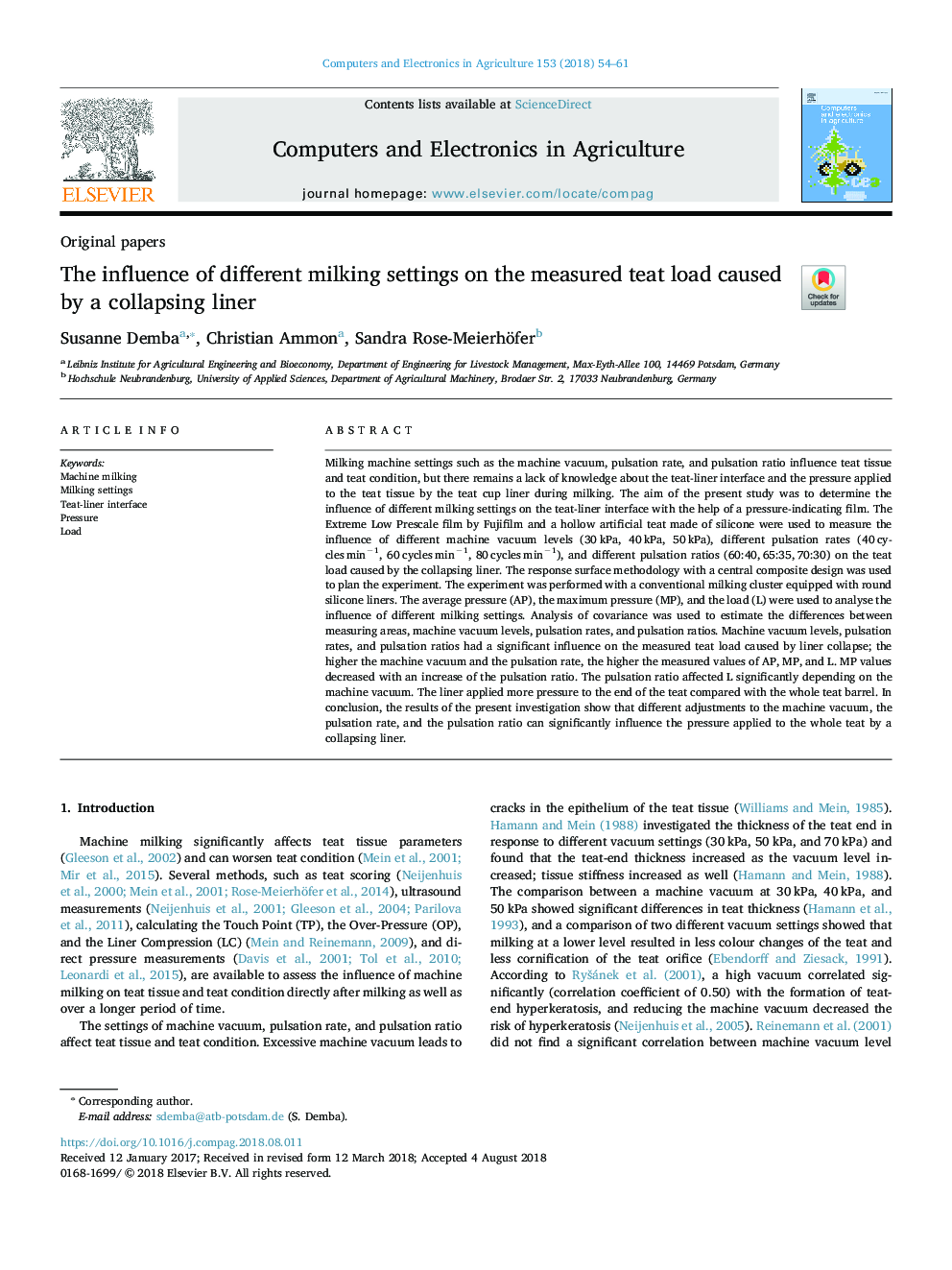| Article ID | Journal | Published Year | Pages | File Type |
|---|---|---|---|---|
| 6539151 | Computers and Electronics in Agriculture | 2018 | 8 Pages |
Abstract
Milking machine settings such as the machine vacuum, pulsation rate, and pulsation ratio influence teat tissue and teat condition, but there remains a lack of knowledge about the teat-liner interface and the pressure applied to the teat tissue by the teat cup liner during milking. The aim of the present study was to determine the influence of different milking settings on the teat-liner interface with the help of a pressure-indicating film. The Extreme Low Prescale film by Fujifilm and a hollow artificial teat made of silicone were used to measure the influence of different machine vacuum levels (30â¯kPa, 40â¯kPa, 50â¯kPa), different pulsation rates (40â¯cyclesâ¯minâ1, 60â¯cyclesâ¯minâ1, 80â¯cyclesâ¯minâ1), and different pulsation ratios (60:40,â¯65:35,â¯70:30) on the teat load caused by the collapsing liner. The response surface methodology with a central composite design was used to plan the experiment. The experiment was performed with a conventional milking cluster equipped with round silicone liners. The average pressure (AP), the maximum pressure (MP), and the load (L) were used to analyse the influence of different milking settings. Analysis of covariance was used to estimate the differences between measuring areas, machine vacuum levels, pulsation rates, and pulsation ratios. Machine vacuum levels, pulsation rates, and pulsation ratios had a significant influence on the measured teat load caused by liner collapse; the higher the machine vacuum and the pulsation rate, the higher the measured values of AP, MP, and L. MP values decreased with an increase of the pulsation ratio. The pulsation ratio affected L significantly depending on the machine vacuum. The liner applied more pressure to the end of the teat compared with the whole teat barrel. In conclusion, the results of the present investigation show that different adjustments to the machine vacuum, the pulsation rate, and the pulsation ratio can significantly influence the pressure applied to the whole teat by a collapsing liner.
Keywords
Related Topics
Physical Sciences and Engineering
Computer Science
Computer Science Applications
Authors
Susanne Demba, Christian Ammon, Sandra Rose-Meierhöfer,
